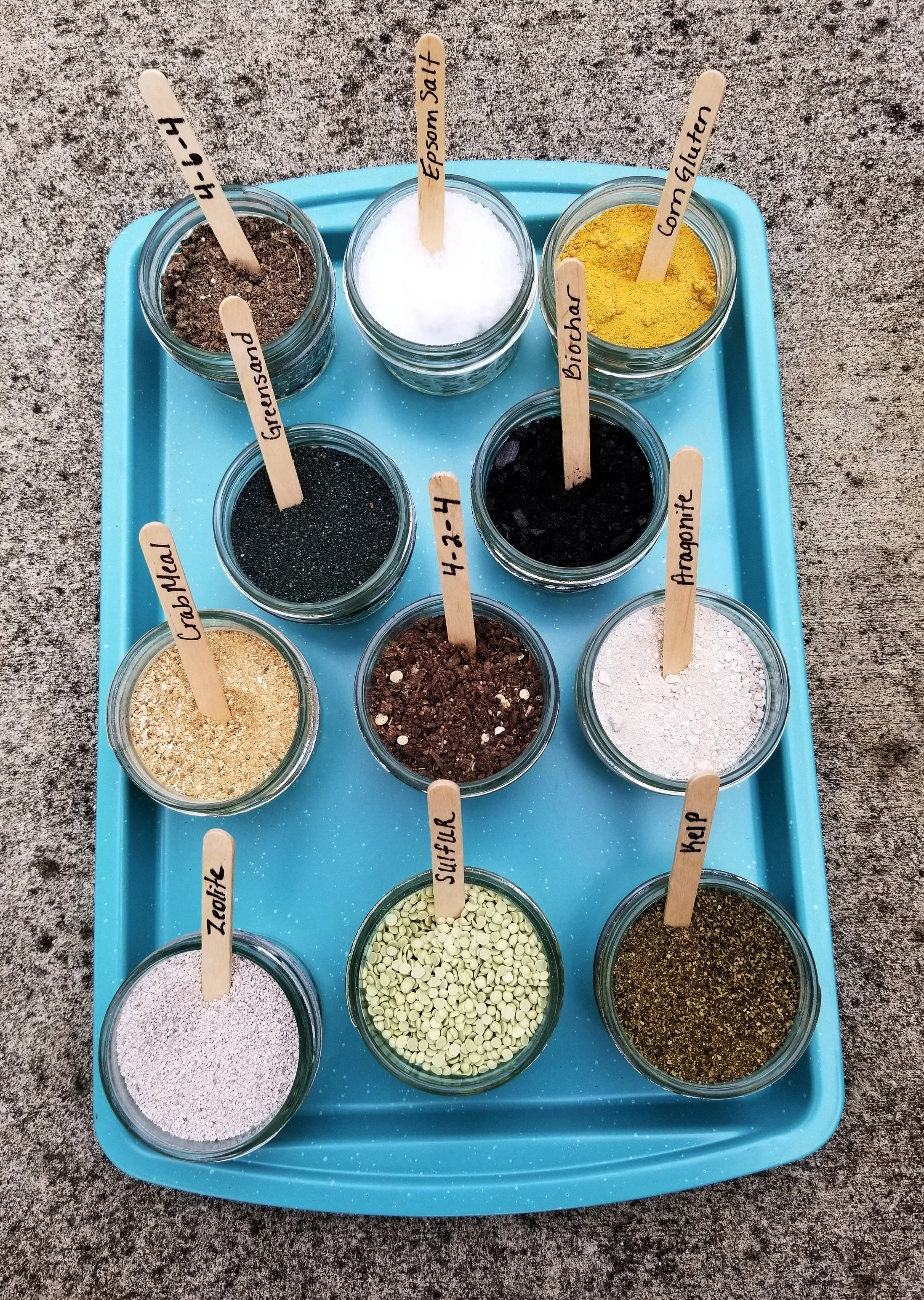Amending vs. Fertilizing
This past Sunday I spoke at NOFA NJ 2018 Winter conference. What an honor to be able to speak to so many enthusiastic like-minded people.
This week I am going to talk about one of the things I am presenting on this conference season. That is the concept of amending vs. fertilizing. It seems like a no-brainer for the seasoned farmer yet, is it? I attended meetings last year and was shocked at the number of growers that didn’t seem to understand the difference and how, when and why behind the two.
First, I have to recommend you get a soil test done. Is a soil test the end all be all to a fertility program – no. However, it is the foundation for building a plan to manage the health and fertility of your soil and crops.
Let’s start with the basic definitions –
Amendments are used to change the physical & chemical properties of a soil. It is a long-term project that should be carried out over the course of several months if not years. My husband hates when I say years, but it is true. He thinks I’m going to scare people. But think about it - Soil was not created overnight nor will you be able to change it overnight.
Some amendments include limes, aragonite, greensand, mulch, manures, composts, elemental sulfur, peat, coir, rice hulls, biochar, gypsum, Azomite, and cover crops.
Fertilizers are intended to feed the individual crop/plant. Given the source of fertilizer, you can feed and encourage the biology of the soil as well. The right source, rate, time, and placement are critical to ensuring optimal plant use, nutrition, and yields.
Some common natural or organic fertilizers are blood meal, feather meal, peanut meal, corn gluten, crab meal, fish, kelp, manures, bone char/meal, sul-po-mag, sodium nitrate, Epsom salts, kelp, etc.
Both look very similar and follow similar principles for application but having a soil test and understanding why you are using them can save you money in the long run. Understanding the basic concept of there intended use can also lead to a more efficient and effective fertility program as well.

